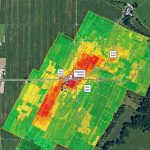Vertical farming
Vertical farms are changing the way food is grown and distributed. They grow fresh produce in urban areas where it would be difficult or impossible to farm traditionally. Instead of using traditional soil-based agriculture, vertical farms grow plants indoors, in controlled environments, in stacks or columns on a wall or floor. Plants are usually placed close together and provided with optimal lighting, temperature, and humidity levels to optimize growth while minimizing water use and other inputs.
In this article, we’ll explore what vertical farming is and how it differs from traditional farming techniques.
Is vertical farming really more environmentally friendly than traditional farming?
There is no doubt that indoor vertical farming is more environmentally friendly than traditional farming.
- It uses less space and water than traditional outdoor agriculture. This means that there are fewer environmental impacts resulting from the cultivation of crops.
- Fewer chemicals are used, compared with traditional outdoor farms, because growers don’t have to deal with pests as often or at all (since pests are usually kept out by a barrier). This can reduce contamination of soil and groundwater with pesticides and herbicides.
- Nutrients are recycled, in a closed loop, instead being disposed to the environment. This reduces the amounts of fertilizers that are used.
- Vertical farming also drastically reduces emissions from tractors, seeding equipment and other machinery used to work the soil.
Does vertical farming have any disadvantages?
Vertical farming does have some disadvantages. It’s more expensive than traditional farming, as you need to invest in specialized equipment and expertise. In addition, it also require a lot of electricity, as the lights are on for long periods of time each day. When it comes to growing crops like vegetables or fruits, vertical farms are not as efficient as traditional farms, because they don’t get enough sunlight during their growth cycle. Therefore, it is mostly used for growing leafy greens, such as lettuce and herbs.
Vertical farms grow plants with efficient LED lights, which help reduce energy costs while improving the crops.
LED lighting is revolutionizing farming. LED lights have the potential to generate more energy and be cheaper than traditional lighting, and they can also be tuned to specific wavelengths of light for different plants. This means that vertical farmers can grow multiple crops in the same space.
There are several ways in which LED lights could make it easier for vertical farmers to grow food in urban areas:
- They’re more efficient than fluorescent or incandescent bulbs (by about 50 percent)
- They last longer than other bulbs (about 50 times longer)
New technologies that use air, water, and nutrients instead of soil — hydroponics and aeroponics — help farmers to grow more food using less water than traditional soil-based agriculture.
New technologies that use air, water, and nutrients instead of soil — hydroponics and aeroponics — are helping farmers grow more food using less water than traditional soil-based agriculture.
Hydroponic systems water plants directly with nutrients dissolved in the water, which are then recirculated and reused for plant growth. The system is designed so that any excess nutrient solution drains away from the root zone, preventing build up of salts or other minerals in the growing medium or clogging pipes carrying the nutrient solution between different parts of a greenhouse facility. Aeroponic systems work similarly but instead spray fine mist onto plant roots suspended above trays filled with a growing medium; once again this system uses recycled nutrient solutions rather than fresh water as its source for feeding plants with essential minerals like nitrogen (N), phosphorus (P), potassium (K), calcium & magnesium so they can grow strong and healthy.
Vertical farms can controlled by computer software tuned for maximum efficiency and productivity.
Vertical farms can be run by computer software tuned for maximum efficiency and productivity. The following is a list of some the things that can be controlled via computer.
- Climate control: Temperature, humidity, and CO2 levels are all monitored and adjusted if needed.
- Plant health monitoring: Sensors monitor the plants’ overall health and environmental conditions, alerting staff if there is an issue with growth.
- Grow lights: Computer software controls which lights are turned on at what time.
Summary
Vertical farming is a new way to grow food that can potentially be more environmentally friendly than traditional agriculture.
The future of vertical farming is bright, with innovations that help make this technology more accessible to urban areas. By combining the best practices from traditional agriculture and hydroponic systems, vertical farms are able to grow a wider range of crops than ever before — from strawberries to lettuce or even tomatoes. Vertical farms can be run by computer software tuned for maximum efficiency and productivity, meaning that growers have less labor costs and spend less time caring for their crops.
Innovations such as LED lights help reduce energy costs while improving the crops grown indoors by using less water than traditional soil-based agriculture would require. Sensors can monitor plant growth, signaling when it needs watering or feeding. By recycling inorganic nutrients, we can create a closed loop system and improve our environment!
The biggest advantage of vertical farming is that it uses less land, water and energy compared with traditional agriculture. However, there are also some drawbacks like high costs of operation, lack of space in urban areas (where most people live today), among others.







